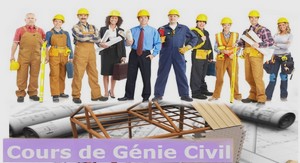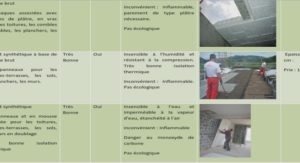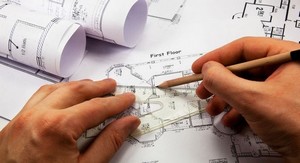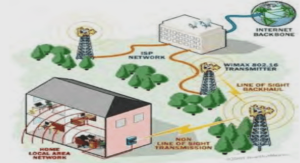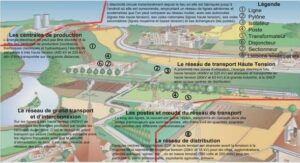URBAN GREEN SPACES IN GROWING CITIES
INTRODUCTION
Green spaces are one of the most important and valuable areas in terms of land use considering the economical, physical and socio-cultural functions in the urban system (Çetiner, 1979). In modern world, people wanted to escape from overcrowded places and try to live in places which are peaceful, clear and calm. The main goals of the landscape and urban planning theories such as compact city, garden city, eco-towns are to bring together the attractions of living in a city and the attractions of living in a country site together, which can only be done by well-designed and maintained urban green spaces and public open spaces (Kayıran, 2010).
THE TERM OF URBAN GREEN SPACES
Green spaces are very diverse in literature, ranging from city parks to green walls and rooftop gardens, from urban forests to allotment gardens. Green spaces can be broadly defined as any vegetated areas found in the urban environment, including parks, forests, open spaces, lawns, residential gardens, or street trees. The types and benefits of green spaces are broad and diverse. The reason that green space definition covers such large meaning, the research will be mostly focused on urban green spaces used by public for recreational purposes which are located in the city centers or can be easily reached by pedestrian or cycling paths. The literature on human experience in green environments has widely shown the positive outcomes of getting in contact with nature (Kabisch et al., 2015). Historically, most cities were almost devoid of green spaces, but cities were relatively small and most people lived in rural areas. It wasn’t until the 19th century that the importance of parks and other urban green for residents was recognized to some extent (Swanwick et al., 2003). The first green spaces were developed in the new districts of the cities. 15 During the 19th century, there was a convergence of urban landscape traditions with concepts from continental Europe, Britain, and the United States coming together to define a new urban landscape. There was a new emphasis on making cities more livable including the straightening and widening of streets with room for raised sidewalks and trees. With the Industrial Revolution, there was a growing need and demand for green spaces within cities that could be accessed by the poor, and many of these city parks and gardens included trees. The British city parks included both rural and urban aspects including large areas of lawn, clusters of trees, waterways, promenades, restaurants, and zoological and botanical gardens. This form began to replace the more formal gardens of continental Europe, first in Germany and then throughout Europe over the course of the century (Jackson, 2013). Today, it is understood that urban green spaces are essential for well-functioning and livable cities because they play a recreational role in everyday life; contribute to the conservation of biodiversity; contribute to the cultural identity of the city; help maintaining and improving the environmental quality of the city; and bring natural solutions to technical problems (e.g., sewage treatment) in cities (Sandström 2002).
DEFINITION OF GREEN SPACES
The definition of urban green spaces which is agreed on by ecologists, economists, social scientists and planners is public and private open spaces in urban areas, primarily covered by vegetation, which are directly (e.g. active or passive recreation) or indirectly (e.g. positive influence on the urban environment) available for the users (B. Tuzin, 2002). Urban open space is a generic term covering all non-built up spaces within the administrative boundaries of a town or city. In this sense urban open space includes all ‘outdoor’ spaces including streets and squares, woodlands and agricultural areas as well as traditional parks and gardens. More recently the concept has been expanded to include those parts of the built fabric which are open to the sky, including roofs, terraces, balconies etc. and even building facades, where these can be clad with 16 vegetation. As a consequence of this extended definition, urban open space can be seen as a continuous matrix of space within which all the built components of the city are situated, and which flows between and over the buildings, linking the urban centre with the surrounding peri-urban and rural landscape. As such it can be seen as representing an essential part of the basic infrastructure of all urban areas (Hudeková, 2011). As the term « green space » self-evidently demonstrates, these areas are the spaces covered by plants. Consequently, urban open and green spaces can be one of them; large country parks and forests; recreational grounds and playing fields; public squares; street trees and planting; private front and back garden land; green roofs and wallsagricultural and forest areas.
DEFINITION OF URBAN GREEN SPACES
Due to high density population, resident areas become places where people have to accommodate rather than being livable areas. Cities have been becoming more condensed and disorganized urban residences. Whilst the urbanity increases, urban green spaces have become much more important. As one of the urban physical elements, the green spaces provide open spaces as a challenge to the dense urban settlements. In relation with their natural character, they create breathing spaces to the humans and non-human living organisms. In relation to the urban life, they provide interaction places to the inhabitants of the city (Bingol E., 2006). Urban green space is a public and private open spaces in urban areas, primarily covered by vegetation which is directly (active or passive recreation) or indirectly available for the users (URGE, 2001). They are public areas which designate the quality of physical and social environment in urban areas as well as to enable the educational, cultural and recreational usage for all the people whom are living in the city (YUEN, 1996). 17 Urban green spaces are essential elements of the urban areas which maintain the sustainability of the city and well-being of the inhabitants.
